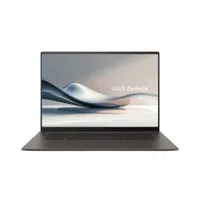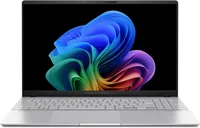Asus Zenbook S16 vs. Vivobook S15: Ryzen AI 300 and Snapdragon X Elite showdown
AMD Ryzen AI 300 vs. Qualcomm Snapdragon X Elite

Despite Terminator 2: Judgment Day's cautionary tale, AI has been booming in the tech industry, and this year, we're seeing a slew of AI laptops. While they weren't the first, Snapdragon X Elite laptops have garnered the most attention. They made up the first wave of Copilot+ PCs, but Qualcomm isn't the only company in this race. AMD just released its Ryzen AI 300 series processors, and it's ready to prove itself in this fight.
Lucky for us, Asus produced laptops with each new chip, and we've reviewed them both. The Asus Zenbook S16 UM5606 is rocking the new AMD Ryzen AI 9 HX 370, while the Asus Vivobook S15 S5507 sports the Snapdragon X Elite X1E-78-100. These are fairly similar laptops, but Zenbooks are technically considered the higher-end model compared to Vivobooks.
Regardless of how Asus positions these laptops, will the Asus Zenbook S16 UM5606 or Asus Vivobook S15 S5507 come out on top?
Asus Zenbook S16 UM5606 | ★★★★
Pros: Unique design; Decent OLED display; Powerful performance; Solid graphics; Long battery life
Cons: Mediocre keyboard and touchpad; Slow SSD
See our full Asus Zenbook S16 UM5606 (Ryzen AI 9) review.
Asus Vivobook S15 S5507 | ★★★★
Pros: Thin-and-light design; Solid OLED display; Strong performance; Long battery life
Cons: Sticky touchpad; Meh audio; Middling graphics
See our full Asus Vivobook S15 S5507 (Snapdragon X Elite) review.
Asus Zenbook S16 vs. Vivobook S15: Specs compared
| Model | Asus Zenbook S16 | Asus Vivobook S15 |
|---|---|---|
| Price | $1,699 (starts at $1,399) | $1,299 (starts at $1,099) |
| CPU | AMD Ryzen AI 9 HX 370 | Snapdragon X Elite X1E-78-100 |
| RAM | 32GB | 16GB |
| Graphics | AMD Radeon 890M | Qualcomm Adreno |
| Display | 16-inch, 2880 x 1800, 120Hz, OLED touch | 15.6-inch, 2880 x 1620, 120Hz OLED |
| Weight | 3.3 pounds | 3.2 pounds |
| Dimensions | 13.92 x 9.57 x 0.47~0.51 inches | 13.88 x 8.93 x 0.58~0.63 inches |
Asus Zenbook S16 vs. Vivobook S15: Price
As I stated above, Asus places the Zenbook is a more premium category than the Vivobook. So how does that reflect in cost?
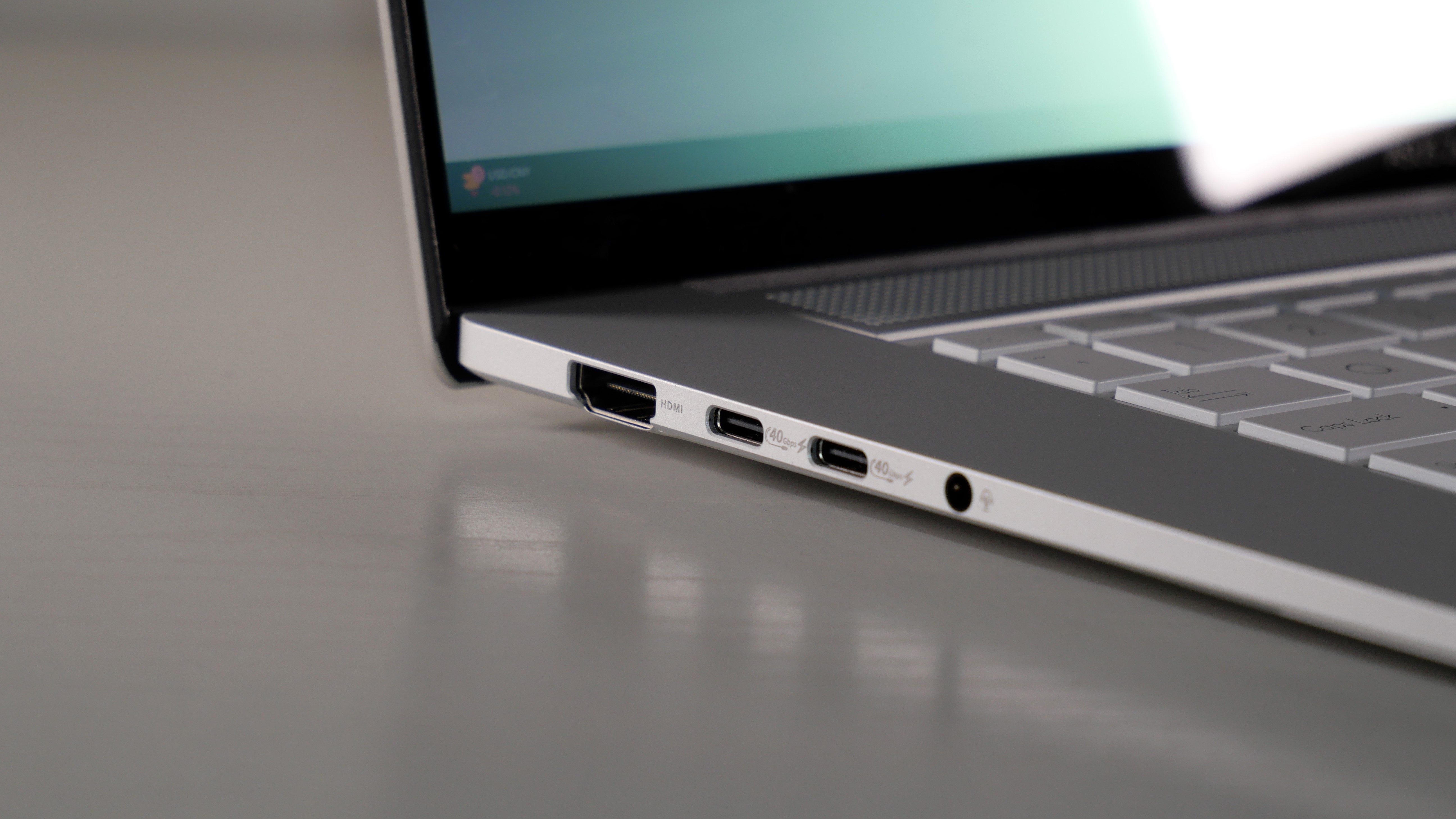
For $1,699, the Asus Zenbook S16 features an AMD Ryzen AI 9 HX 370 processor, AMD Radeon 890M Graphics chip, 32GB of RAM, a 1TB SSD, and a 16-inch, 2880 x 1800, 120Hz, OLED touch display.
For $1,299, the Asus Vivobook S15 offers a Snapdragon X Elite X1E-78-100 CPU, Qualcomm Adreno GPU, 16GB of RAM, a 1TB SSD, and a 15.6-inch, 2880 x 1620, 120Hz OLED display.
These are both the maxed-out models of their respective laptops. The Zenbook lands with more RAM and a slightly higher resolution with more screen real estate. The only other cost difference would be the CPU, but it's tough to determine what that delta looks like.
Sign up to receive The Snapshot, a free special dispatch from Laptop Mag, in your inbox.
The Asus Zenbook S16 starts at $1,299 and drops you to Ryzen AI 9 HX 370 CPU, Radeon 880M Graphics chip, and 24GB of RAM. Meanwhile, the Asus Vivobook S15 starts at $1,099 and drops to a Snapdragon X Plus X1P-64-100 CPU and 512GB SSD.
Looking at the base price is more interesting because for $200 more, you get an additional 8GB of RAM and a 1TB SSD. But one of them does get you to a more affordable range. This is too tight to declare an actual victor.
Winner: Draw
Asus Zenbook S16 vs. Vivobook S15: Design
You might think this would be close because these laptops look so similar, but I already decided on the victor before I got to this section.
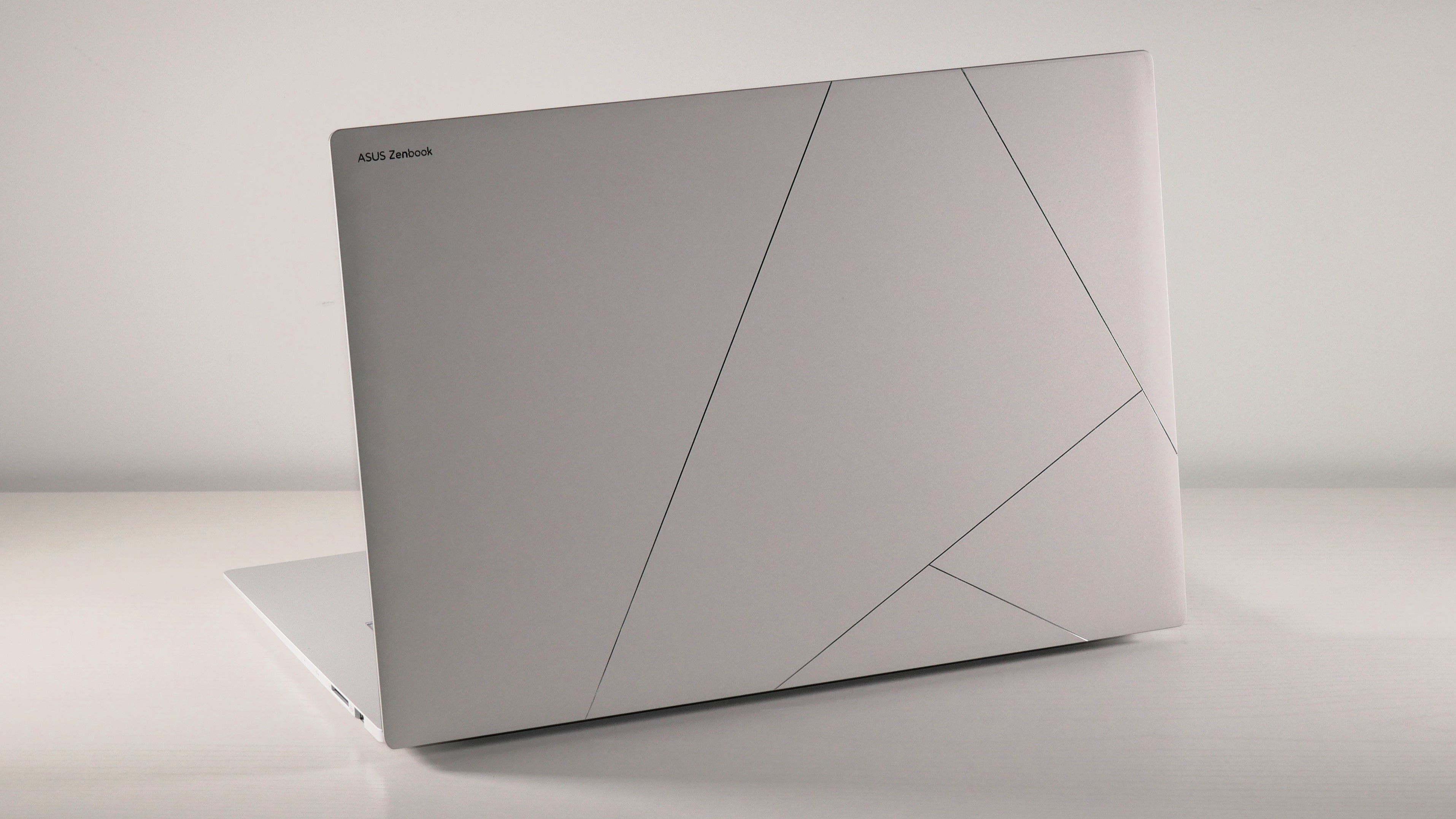
The Asus Vivobook S15 features a sleek, premium chassis but looks like a MacBook. On the other hand, the Zenbook S16 features a unique Ceramic-Ceraluminum lid that looks and feels like pottery. Along with sleek lines of glossy silver shaping into the Zenbook logo on the lid, it's clearly the superior design.
But what about size? That one is interesting.
Despite being a 16-inch laptop, the Zenbook S16 weighs 3.3 pounds and measures 13.92 x 9.57 x 0.47 ~ 0.51 inches. Meanwhile, the Vivobook weighs 3.2 pounds and measures 13.88 x 8.93 x 0.58~0.63 inches. Somehow, the Zenbook is thinner and barely sacrifices any width despite its larger display.
This is a slam dunk for the Zenbook S16.
Winner: Asus Zenbook S16
Asus Zenbook S16 vs. Vivobook S15: Display
While one is a 16-inch and the other a 15-inch, the displays of the Asus Zenbook S16 and Vivobook S15 are incredibly similar. The former features a 16-inch, 2880 x 1800, 120Hz, OLED touch, while the latter is outfitted with a 15.6-inch, 2880 x 1620, 120Hz OLED display.
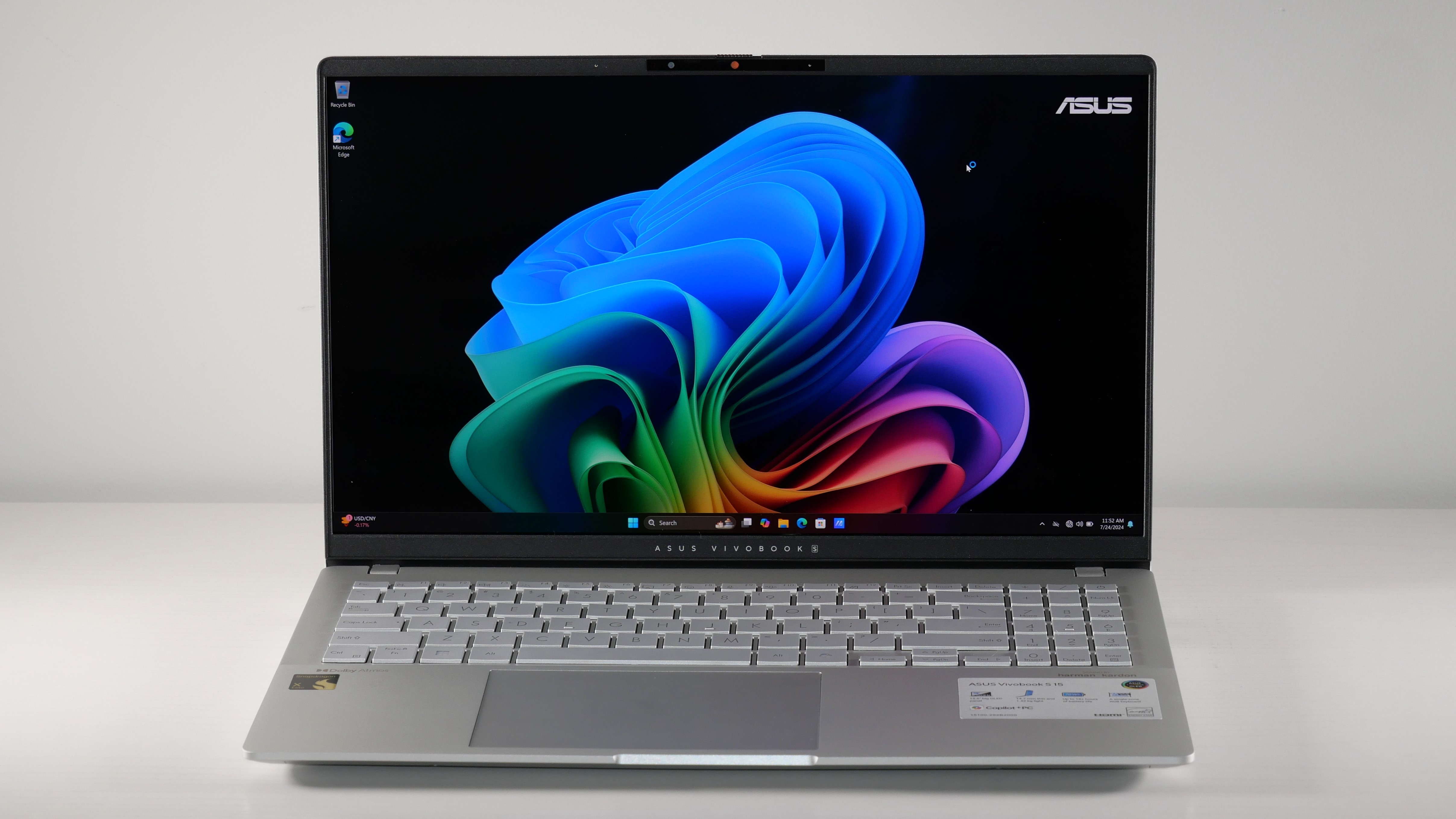
The immediate advantages that the Zenbook S16 benefits from are its bigger screen and higher resolution, but the increase is slight enough to be unnoticeable unless you're looking at them side by side.
The Asus Zenbook S16 registers 79.7% of the DCI-P3 color gamut and has an average brightness of 357 nits. The Asus Vivobook S15 covers 82.8% of the DCI-P3 color gamut and has an average brightness of 370 nits.
Again, this race is pretty tight, but I think better color and more brightness are more valuable than a larger, sharper screen. It's about quality, not quantity.
Winner: Asus Vivobook S15
Asus Zenbook S16 vs. Vivobook S15: Performance
Here it is, folks, the moment of the hour: AMD Ryzen 9 AI vs. Qualcomm Snapdragon X Elite. Will the Zenbook S16's AMD Ryzen AI 9 HX 370 outpace the Vivobook S15's Snapdragon X Elite X1E-78-100? Or will it be the other way around? Let's find out.
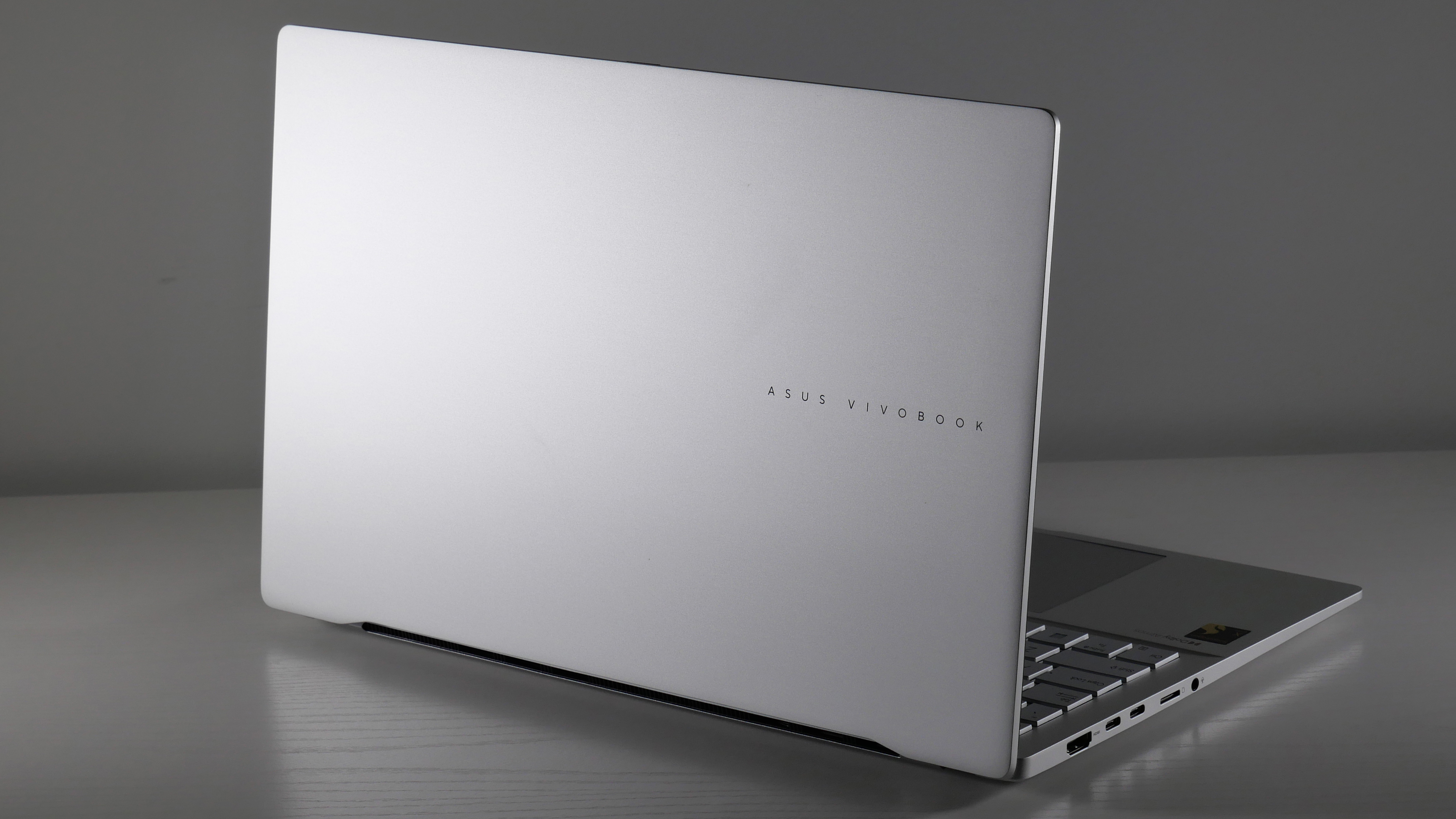
On the Geekbench 6.3 overall performance test, the Asus Zenbook S16 scored 13,282, while the Asus Vivobook S15 scored 14,522.
Yet, on the Geekbench ML 0.6 AI performance test, the Zenbook S16 managed an ONNX/CPU score of 3,377, surpassing the Vivobook S15’s 2,913.
When we threw our HandBrake benchmark at them, which tasks each with transcoding a 4K video to 1080p, the Zenbook S16 took 5 minutes and 8 seconds, while the Vivobook S15 did it in 4 minutes and 27 seconds.
The storage test is a little more brutal. We measured the transfer rate of 25GB of multimedia files, and the Zenbook S16’s 1TB SSD scored 908 megabytes per second, while the Vivobook S15’s 1TB SSD hit 1,296 megabytes per second. That’s a glaring difference.
Despite the price and RAM disparity, the Asus Vivobook S15 pulls through.
Winner: Asus Vivobook S15
Asus Zenbook S16 vs. Vivobook S15: Battery life
Battery life is a critical benchmark for a new CPU. No matter how big your battery is, if your CPU has poor power efficiency your laptop will be dead before the workday ends. The Snapdragon X Elite didn't rocket to fame because of its AI capabilities but rather its battery life. Is the Ryzen AI 300 able to keep up?
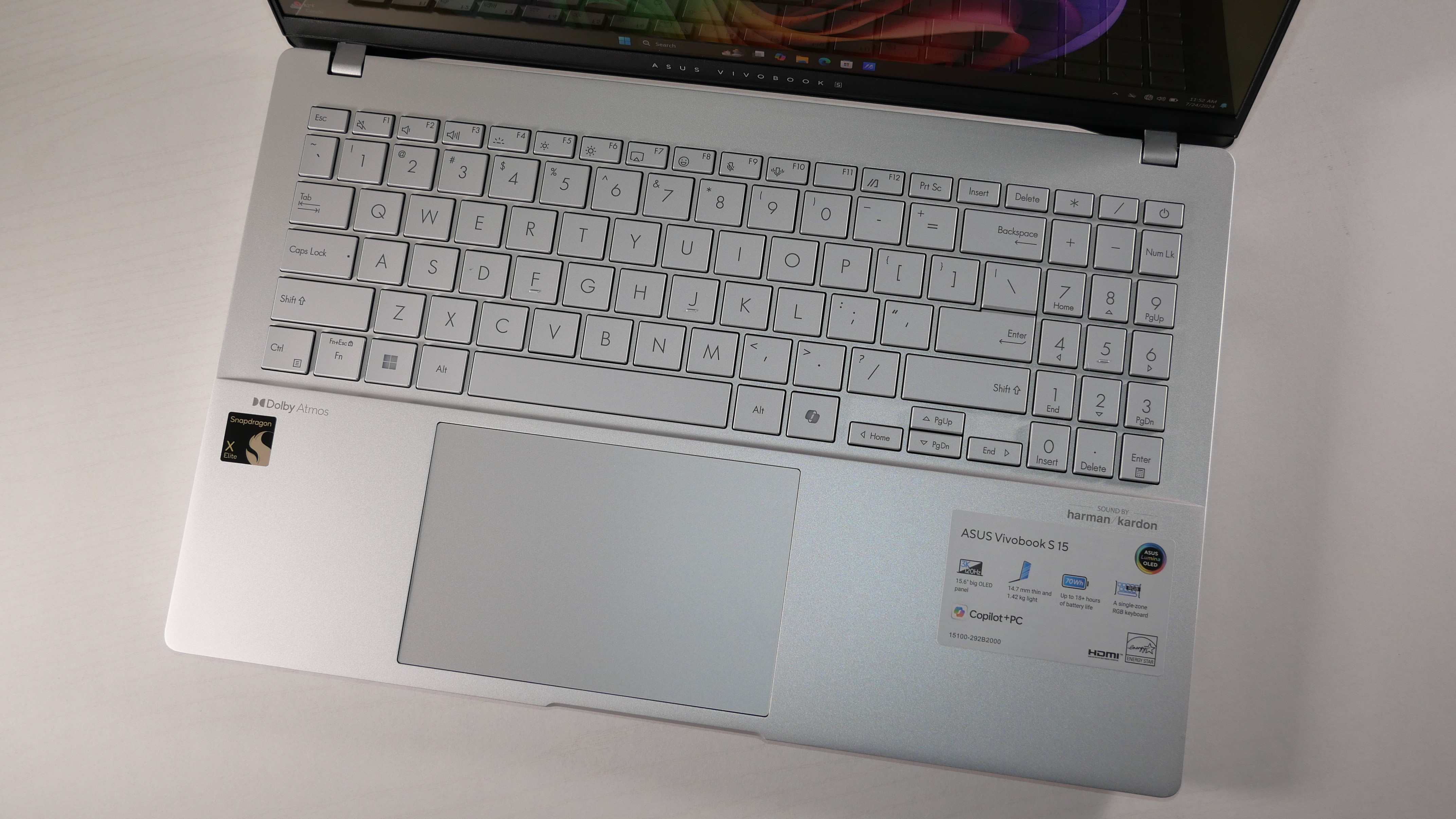
On the Laptop Mag battery test — which continuously surfs through webpages over Wi-Fi at 150 nits of brightness — the Zenbook S16 lasted 11 hours and 35 minutes. That's great... but it's not Snapdragon great. The Vivobook S15 survived 12 hours and 53 minutes. You get an additional hour and some change with the Vivobook.
Winner: Asus Vivobook S15
Overall winner: Asus Vivobook S15
The Asus Vivobook S15 took away more victories, but that didn't mean the Asus Zenbook S16 wasn't fighting tooth and nail for that top spot. This race was close. Too close. Overall, the Asus Vivobook S15 offered better performance, display, and battery life.
However, the Zenbook S16 is in no way lacking in those departments. And it offers way better speakers. But its major flaw is its slow SSD. Meanwhile, both laptops share poor keyboard and touchpad experiences.
The Asus Vivobook S15 is the slightly better option from a benchmark perspective, but both laptops are solid.
Winner: Asus Vivobook S15

Rami Tabari is the Reviews Editor for Laptop Mag. He reviews every shape and form of a laptop as well as all sorts of cool tech. You can find him sitting at his desk surrounded by a hoarder's dream of laptops, and when he navigates his way out to civilization, you can catch him watching really bad anime or playing some kind of painfully difficult game. He’s the best at every game and he just doesn’t lose. That’s why you’ll occasionally catch his byline attached to the latest Souls-like challenge.
